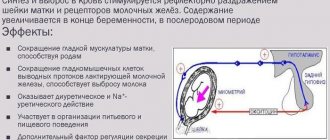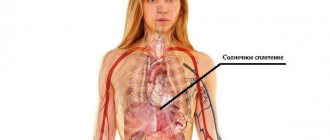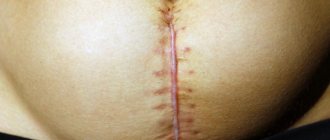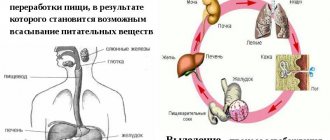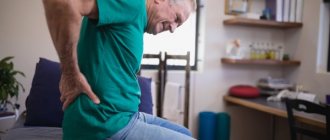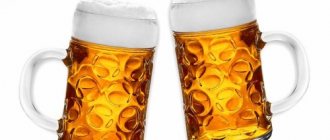Intercostal neuralgia is not a common ailment, characterized by sudden squeezing or piercing pain in the chest area. More often this is a consequence of advanced osteochondrosis or compression of the nerve roots by intervertebral hernias.
The nature of the pain can be different: acute and constant pain or dull paroxysmal pain. Unpleasant sensations are only intensified by any movement, deep breathing, or coughing. More often, patients complain of pain concentrated between the ribs, which intensifies with palpation and pressure. Intercostal neuralgia is an attack of acute, cutting, spasmodic and stabbing pain that surrounds the chest.
During an acute attack, the pain is so strong that it can paralyze a person’s movements. He can't even breathe fully because of the discomfort in his chest. In addition to a pinched nerve, chest pain can indicate many other diseases that are similar in symptoms and signs, however, in order to determine this in time, you need to seek emergency medical help and undergo an examination.
Causes
There are many different causes of pinched nerves and neuralgia between the ribs, but there are the most common ones, the symptoms of which also vary:
- The main reason is age-related changes. Over time, the body's protective functions dry up, muscles lose their elasticity and tone, blood vessels become thinner, and nerves lose their original appearance. In old age, the risk of intercostal neuralgia increases significantly. Patients of above-average age far outnumber young people in presenting with back and chest pain;
- lack of vitamins and microelements. Often, neuralgia in the right side is provoked by a lack of vitamin B, which supports the functioning of the entire central nervous system and restores nerve tissue;
- diabetes. Oxygen starvation, which is characteristic of this disease, becomes an impetus for the depletion of the nerve and its fragility, which is why pinching and compression occur;
- gastrointestinal disorders. Exhaustion of the body due to stomach problems can very quickly disrupt hormonal levels and reduce muscle tone. All these factors provoke neuralgia;
- bone disease, mainly affecting the thoracic region, ribs and spine;
- colds, infectious viruses and poisoning are common causes for the development of neuralgia, and pinching can also occur due to blowing of the back or ribs;
- overload and muscle tension. Spasmed muscles that are tired from overexertion can prevent blood vessels and capillaries from carrying oxygen, supplying blood to organs and working as usual. Therefore, pain occurs;
- diseases of nearby tissues and organs. Any pathological changes will not go unnoticed by the nerve cells, and therefore the reaction in the form of pain is immediate.
Intercostal neuralgia, costochondritis, osteoporosis
Nerve entrapment is manifested by unilateral or girdling pain, limited movement
The disease manifests itself as shooting pain, similar to an electric shock. It occurs due to irritation or pinching of nerve endings due to osteochondrosis of the thoracic spine, as well as vertebral protrusion and intervertebral hernia.
Depending on the location of the hernia, pain is noted only in the ribs, on one or both sides. May tingle and shoot in the neck, shoulder or arm. Accompanied by numbness in the hand and muscle weakness. The following factors can provoke neuralgia:
- hypothermia;
- great physical activity;
- back injuries;
- introduction of infection.
Costochondritis or Tietze's syndrome is a thickening of the cartilaginous edge of the ribs that causes pain. It occurs suddenly, the symptoms are similar to an attack of angina. The pain can be severe and spread throughout the sternum. It intensifies if you press on the ribs. And also with a deep exhalation and sigh, coughing, changing body position. The skin at the site of compaction may turn red. The temperature rises and swelling occurs.
Osteoporosis is characterized by the destruction of bones due to lack of calcium. In the early period the pain is minor. They appear in the lower and upper ribs on the right or left side. Soreness indicates irritation of the periosteum, the presence of small cracks. When sharp pain occurs, there is reason to suspect a fracture. Patients with osteoporosis experience poor posture and chest deformity.
Risk factors
There are several factors that can increase your chances of getting symptoms of intercostal neuralgia. There are common risk factors, which include:
- viral infection of chickenpox, herpes zoster, etc. viruses;
- trauma received as a result of an accident and careless driving, as a result of which the ribs, chest, intercostal nerves were damaged;
- sports that carry a risk of injury. Active activities in sparring, fast movement, wrestling. Any contact with an opponent can be harmful. These types include: football, basketball, boxing, wrestling, rugby, skiing.
Stretching
Despite the fact that the intercostal muscles are short and are actually “hidden” between the ribs, stretching them is quite possible. As a rule, this problem affects only the external muscles and occurs most often due to sports activities. The most common causes of sprains are:
- sudden lifting of too much weight;
- large load on the chest or back without preheating;
- swinging your arms too sharply or turning your body;
- a strong blow to the chest area with equipment or during sparring.
It would be more correct to say that in such cases the muscle fibers do not stretch, but receive a partial rupture. As a result of the injury, local hemorrhage, swelling and pain occur, which intensify when trying to use the damaged area.
Important! Athletes aren't the only ones at risk of intercostal muscle strain. Such an injury can easily occur in everyday life: when carrying heavy objects, falling, or turning the body poorly.
Even a strong, prolonged cough can damage the fibers and cause symptoms similar to a sprain, since the human chest is poorly adapted to sudden and frequent contractions. An exhausting cough can cause complete injury to the muscles and diaphragm.
When the intercostal muscles are stretched, pain is felt along the ribs, which intensifies when pressed and takes a deep breath. At the same time, the skin over the stretched area should not have visible pathologies, and if the pain is accompanied by swelling and redness of the skin, then this is already a sign of inflammation.
Risk reduction
There are points of an active lifestyle that will not only help you feel lighter and more confident, but will also reduce risk factors for the development of intercostal neuralgia. How to reduce the risk?
- Vaccination against chickenpox and other viral infections that can cause the disease.
- Vaccination after 60 years against herpes zoster, because it is after this age that the likelihood of infection increases.
- Protect yourself from heavy loads, especially with problem joints and a weak vascular system of the body.
- Do not drive while intoxicated.
- When traveling in a vehicle, use protective measures - a seat belt - to protect yourself from injury.
- Protection during contact wrestling in sports: helmet, gloves, vest, mouth guard, etc.
Symptoms of diseases in which colitis in the left side under the ribs
Colitis in the left side under the ribs, when a person does not take any active action, or during physical labor - this is only one of the painful signs.
In addition, the following symptoms may occur:
- nausea, vomiting;
- bloating, increased gas formation, flatulence;
- complete or partial loss of appetite;
- indigestion of consumed food caused by dysfunction of pancreatic tissue and lack of enzyme synthesis;
- dizziness, pale skin;
- increased sweating and rapid heartbeat (possible signs of tachycardia, angina, bradycardia, arrhythmia);
- stool disorder, which is caused by intestinal disease and is expressed in the form of diarrhea or prolonged constipation;
- rumbling in the stomach, increasing after a meal;
- the body does not accept fatty, fried, smoked, sour, pickled foods, which is due to the painful condition of the pancreas and the corresponding reaction of the digestive system as a whole.
In the presence of heart disease or the formation of a diaphragm hernia, breathing may be impaired, a feeling of lack of air, and panic attacks may occur. Also accompanying symptoms are physical weakness, headache, decreased ability to work, insomnia at night and drowsiness during the day.
Similarities with other diseases
There are many diseases with similar symptoms that need to be differentiated from intercostal neuralgia in time. Often, without proper examination and instrumental confirmation, inexperienced specialists can confuse this disease with other pathological changes in the body, which without proper treatment can lead to many unpleasant complications and consequences. Common diseases that are confused with pinching are few, but they are all quite serious and require effective treatment: stomach ulcer, pneumonia, heart attack or angina. This can be injuries of varying degrees of complexity, for example, a rib fracture. How to distinguish the symptoms?
Peptic ulcer and pinching
Many symptoms of peptic ulcer disease are similar to neuralgia, however, there is one feature that immediately distinguishes them. All symptoms are associated with food intake or lack thereof. The intensity of the pain does not change in any way when changing body position or movement. Analgesics will be ineffective in this case; relief occurs after taking antiulcer drugs. The nature of the pain is acute, as in the case of pinching, but with an ulcer the stomach tenses, the patient experiences discomfort in the abdominal area. To confirm, use ultrasound, x-ray or FGDS data.
Heart disease, angina pectoris
In heart disease, the nature of the pain exactly repeats the pain with neuralgia, but it passes quickly and such attacks can be repeated with some frequency, but do not depend in any way on movement or a change in body position. Heart problems are determined using ECG and ultrasound.
Heart attack
Such pains do not go away on their own, as in the situation with angina pectoris; they resemble pinching in nature, intensity, and duration. Analgesics are powerless in this case; symptomatic attacks of pain can be removed only with the help of antianginal and cardiotonic drugs. Pathological changes in the heart can be observed on the ECG; in this case, blood pressure will change, and the patient may lose consciousness.
Similarity to broken ribs, trauma
In this case, the nature of the pain and its intensification with movement are similar, but it must be taken into account that in the event of an injury, the location of the pain may be swollen with a hematoma, a change in the color of the tissue, etc.
Pneumonia: similar to pinched nerves
If the lung damage due to pneumonia is extensive, the patient experiences pain when taking a deep breath or coughing. It is similar to the pain of neuralgia, but not as intense, and is also accompanied by cough, fever, chills and other symptoms. An X-ray will help identify such changes, and when listening, the doctor will hear wheezing and changes in the lungs characteristic of inflammation.
Hepatitis and cirrhosis of the liver
Cirrhosis often occurs after hepatitis if the diet is not followed
Hepatitis is an inflammatory process in the liver of infectious or non-infectious origin. May be the result of viruses and bacteria. Sometimes the pathology is hereditary and is caused by poisoning, poor diet or alcoholism.
Characterized by dull and aching pain in the liver area. The ribs on the right side in front hurt when pressed. During palpation, an enlargement of the organ is detected. Over time, other functional disorders appear:
- constant nausea;
- yellowness of the skin;
- capillary hemorrhages;
- the appearance of edema.
In fact, cirrhosis is a complication and result of untreated hepatitis. The symptoms of these diseases are similar.
Diagnostic methods
It is important to consult a doctor for help in a timely manner. There is no need to diagnose diseases yourself, much less prescribe treatment for yourself using the advice of traditional medicine. If you notice the first symptoms, pain or discomfort, you should contact a specialist.
The first thing the doctor does is listen to complaints, conduct an examination with palpation and identify sore spots, and only after that can he make a preliminary diagnosis of intercostal neuralgia.
Next, instrumental and laboratory examination methods are carried out to exclude the presence of other diseases, injuries or pathologies. MRI and CT will help exclude hernia and cancer formations along the spine.
An ECG and ultrasound of the heart will help rule out cardiovascular diseases, in particular angina. Next, biochemical tests of blood and urine are carried out, tests for the presence of viral infections in the body and antibodies to combat them. A chest X-ray and electroneurography are performed. The results of all these studies will help to build a real picture of the disease, effective treatment options and complete relief from the negative symptoms of the pathology.
Why does it hurt in the left side under the ribs?
The occurrence of intense tingling on the left side of the ribs, which resembles a prick with a needle or other sharp object, indicates a painful condition of the internal organs located in this part of the body.
Colitis in the left side under the ribs
In terms of its expression, tingling in the left hypochondrium can be as follows:
- burning – indicates an increase in the inflammatory process;
- aching – continues for 10-12 hours in a row, significantly reduces the patient’s quality of life;
- spasmodic - characterized by pulsating lumbago that has a certain time interval;
- acute - tingling in the hypochondrium is so strong that the patient is forced to reflexively bend or take a horizontal position.
Based on the clinical manifestation of the pain syndrome, one can judge whether the disease develops in an acute form or is sluggish. A tingling feeling in the left hypochondrium is one of the symptoms of the underlying disease.
Therefore, when these sensations appear, it is necessary to pay attention to other signs of the disease. This type of pain syndrome can be provoked by inflammatory processes, foreign tumors, stretching of the muscle fibers of the peritoneum, or a violation of the order of the internal organs.
Treatment
Intercostal neuralgia requires complex treatment, combining medication and physiotherapy. You cannot use only one direction; the effect is achieved through complex treatment.
Drug treatment includes:
- non-steroidal anti-inflammatory drugs. Mainly used in the form of tablets or intramuscular injections. They relieve pain, relieve inflammation and other symptoms, and promote rapid recovery. In some cases, injection solutions are used when a person’s pain threshold is weak and discomfort interferes with the person’s normal functioning;
- ointments, gels, pain-relieving creams. For local use in combination with internal medication, use Voltaren, Finalgon, Ketonal, etc. These products are applied to the skin in places where pain is localized to relieve the unpleasant effects of pinching, relax muscles, and reduce inflammation;
- in extreme cases, blockade is an indispensable remedy. If the pain is pronounced and does not subside for a long time, becoming unbearable, a special injection of anesthetic drugs is used in the area of the affected nerve.
Among the physiotherapeutic procedures that are effective are:
- acupuncture. With its help, you can improve blood flow, activate the necessary points, relieve pain and start the body's metabolic processes. The doctor will decide how many sessions you need; this figure is individual for each person;
- electrophoresis. For at least a week, exposure to electrical waves gives a positive result in getting rid of pain;
- manual therapy. It can relax tense muscles, reduce compression of nerve endings, relieve pain, align the vertebrae and intervertebral discs;
- massage. With its help, the nerve impulses of the body are stimulated, blood flow improves, the metabolic process intensifies, the body relaxes, and the muscles become toned.
For each patient, a different scheme and duration of sessions is selected, taking into account the severity of the pinching, pain syndrome and neglect of the process.
Herpes zoster
Activation of the herpes virus is accompanied by fever and general malaise
Herpes zoster is a fairly common and extremely unpleasant condition. This viral disease manifests itself as unilateral damage to the skin and nervous system, sometimes with severe complications. The rashes are located along the nerve endings affected by the virus. The initial period, before the appearance of the rash, lasts 2–4 days and is characterized by the following symptoms:
- weakness, malaise, headache;
- the temperature rises slightly;
- dyspepsia;
- lymph nodes enlarge.
In places where the rash will subsequently appear, a tingling sensation is felt in the area of the peripheral nerve endings. Most often, the rash affects the skin of the torso and limbs. Foci of the rash are observed in the intercostal area and lumbar back. The condition manifests itself as pain under the ribs, in the left or right side. The discomfort is complicated by itching and burning.
Preventive measures
In order not to get a pinched nerve and not to encounter the problem of intercostal neuralgia, you must adhere to the basic rules in life:
- promptly consult a doctor with viral infections, joint diseases and any other serious illnesses that require prompt measures;
- avoid hypothermia;
- reduce the risk of injury of varying complexity;
- diversify your diet with vitamins and microelements necessary for any body;
- do morning exercises, gymnastics, play sports, move more;
- take daily walks in the fresh air;
- watch your posture;
- give up bad habits, eliminate alcohol;
- undergo a medical examination in a timely manner.
Intercostal neuralgia does not tolerate independent decisions; it must be treated by a competent professional who will prescribe a whole range of different procedures. The earlier the disease is diagnosed, the more painless the recovery process will be and the lower the risk of complications.
